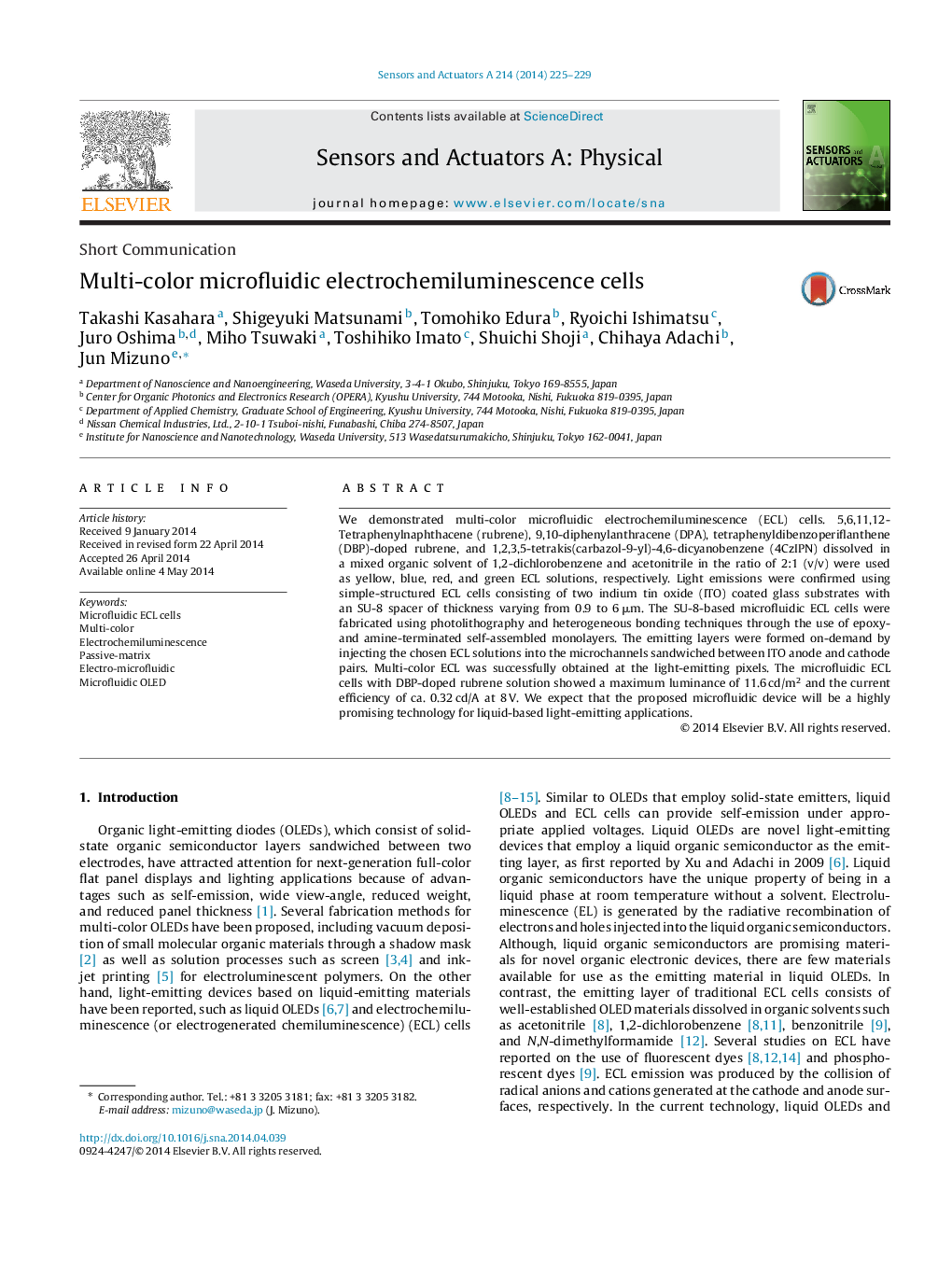| Article ID | Journal | Published Year | Pages | File Type |
|---|---|---|---|---|
| 739350 | Sensors and Actuators A: Physical | 2014 | 5 Pages |
•We developed multi-color microfluidic electrochemiluminescence (ECL) cells.•SU-8 microchannels sandwiched between indium tin oxide (ITO) anode and cathode pairs were fabricated by photolithography and heterogeneous bonding techniques.•Several emission colors (wavelength) can be obtained on-demand by only injecting small amounts of liquid emitters into the microchannels.
We demonstrated multi-color microfluidic electrochemiluminescence (ECL) cells. 5,6,11,12-Tetraphenylnaphthacene (rubrene), 9,10-diphenylanthracene (DPA), tetraphenyldibenzoperiflanthene (DBP)-doped rubrene, and 1,2,3,5-tetrakis(carbazol-9-yl)-4,6-dicyanobenzene (4CzIPN) dissolved in a mixed organic solvent of 1,2-dichlorobenzene and acetonitrile in the ratio of 2:1 (v/v) were used as yellow, blue, red, and green ECL solutions, respectively. Light emissions were confirmed using simple-structured ECL cells consisting of two indium tin oxide (ITO) coated glass substrates with an SU-8 spacer of thickness varying from 0.9 to 6 μm. The SU-8-based microfluidic ECL cells were fabricated using photolithography and heterogeneous bonding techniques through the use of epoxy- and amine-terminated self-assembled monolayers. The emitting layers were formed on-demand by injecting the chosen ECL solutions into the microchannels sandwiched between ITO anode and cathode pairs. Multi-color ECL was successfully obtained at the light-emitting pixels. The microfluidic ECL cells with DBP-doped rubrene solution showed a maximum luminance of 11.6 cd/m2 and the current efficiency of ca. 0.32 cd/A at 8 V. We expect that the proposed microfluidic device will be a highly promising technology for liquid-based light-emitting applications.
